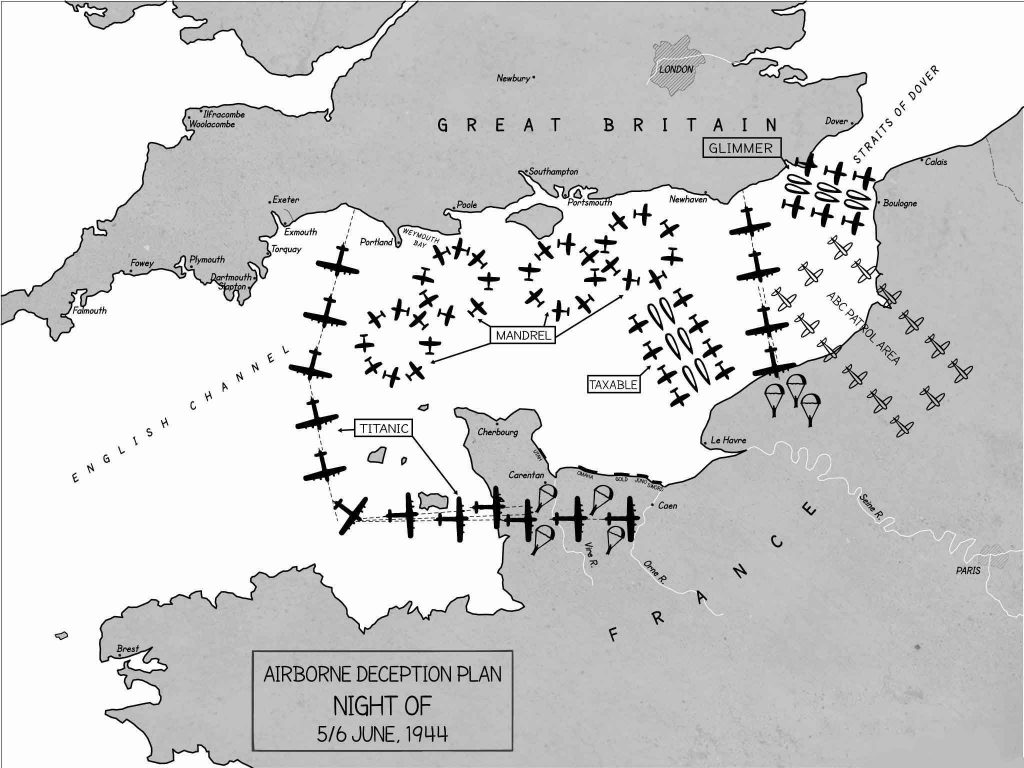Operation Glimmer
Air operations of the Normandy landings

Plan of allied deception operations on the night of June 5 to 6, 1944, with in particular Operation Glimmer.
- Origins of the operation Glimmer
Aware that their invading fleet is likely to be detected by the Channel-oriented radars, the Allies are preparing a deception operation whose aim is to deceive the Germans.
This is how the Glimmer operation is born. The key to success lies in the use of the properties of thin metal sheets, studied by the British physicist Sebastien Pease who works for the benefit of Bomber Command: indeed, these sheets scramble radar echoes and indicate on the screens the presence of multiple objects large size. Allied militaries want to drop these strips of metal over the Channel, off the coast of the Pas-de-Calais, to simulate an amphibious operation in this region and place on alert German soldiers.
In addition to these countermeasure releases, there are small unmanned boats equipped with transponders of the type G.-H., which the bombers tow during their flight. These transponders are intended to simulate the communications network of the dummy fleet.
- Progress of operation Glimmer
On the night of June 5-6, 1944, Royal Air Force’s 218 (Gold Coast) Squadron equipped with Short Stirling bombers was tasked with dropping these thousands of metal strips between Dover and Calais, as well as the transponders.
Bombers have a very precise logbook: they must follow a particular axis at a slow speed, and when they reach the limit of their range of action they are replaced by other bombers who continue the release according to the same trajectory: thus, the Germans observe on their screens echoes similar to those of a flotilla approaching off the Pas-de-Calais. Batteries are ordered to open fire for lack of identification.
- Consequences of operation Glimmer
The main consequence of the Glimmer operation is to add contradictory new information to the flood of data that feeds the German intelligence services during the night of 5 June to 6 June 1944.
These data on the possibility of an amphibious operation in the Pas-de-Calais reinforce the hypothesis according to which the landing of Normandy would be only a diversion, and that the real assault allied would take place in the region of Calais: the Germans station there several thousand men and equipment from fifteen days to one month after June 6, 1944, avoiding the Allies to fight the entirety of their opponents in the same place.
This disappointment operation was based on one of the certainties of the German generals, who were convinced that the landing in the west would take place in the Pas-de-Calais region.
![]() Back to the D-Day air operations
Back to the D-Day air operations
